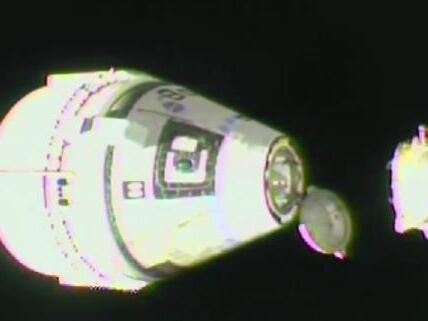Physical Address
304 North Cardinal St.
Dorchester Center, MA 02124
Physical Address
304 North Cardinal St.
Dorchester Center, MA 02124

Boeing’s Starliner spacecraft has departed from the International Space Station (ISS) and is now en route back to Earth, targeting a landing in the New Mexico desert. This marks a significant step in the spacecraft’s development, despite the absence of its intended crew.
Nasa astronauts Suni Williams and Butch Wilmore watched the spacecraft undock autonomously from the ISS, as they will remain there for an additional five months. The decision to have them wait rather than return with Starliner was made after NASA assessed the capsule’s reliability and deemed it unsuitable for crew transport.
Williams expressed excitement during the live broadcast of the undocking, noting, “OK, she’s on her way home. Congratulations to the undock team.” The astronauts will return to Earth aboard a SpaceX vessel in February, leaving them with an extended stay at the station.
NASA officials have expressed confidence in Starliner’s upcoming landing, which they expect to proceed smoothly. As the spacecraft travels back to Earth, it will use parachutes to slow its descent. An anticipated timeline puts the landing occurring early Saturday morning, following a journey that will last a few hours.
Steve Stich, manager of NASA’s commercial crew program, stated, “We have confidence in the vehicle. It’s been a journey to get here, and we’re excited to have Starliner undock and return.” This confidence comes despite the operational challenges faced by the spacecraft prior to its undocking.
The uncrewed Starliner successfully undocked from the ISS at 6:04 p.m. ET, completing the process in five minutes. During the undocking, 27 jets fired, creating a light show visible on the livestream. By 6:11 p.m. ET, the spacecraft had successfully completed all necessary firings to cross the ISS’s Keep Out Sphere as planned.
Starliner is now following a trajectory that will guide it across the Pacific Ocean and toward Baja California, eventually landing at White Sands Space Harbor in New Mexico. Utilizing thruster burns, the spacecraft has autonomously navigated its path back to Earth.
This mission represents the culmination of Boeing’s first crewed test flight of the Starliner, which has faced several hurdles leading up to this point. The capsule’s launch was postponed multiple times before lifting off from Kennedy Space Center in Florida on June 5. After arriving at the ISS a day later, engineers discovered multiple helium leaks and propulsion system issues that complicated its return.
Boeing had aimed to demonstrate Starliner’s operational capability to gain NASA approval for regular crewed flights to the ISS, similar to SpaceX’s operational track record. With the challenges encountered, Boeing will need to undertake further ground tests and modifications to the spacecraft to address propulsion issues and prepare it for future missions.
Since 2020, SpaceX has consistently transported astronauts and supplies to the ISS aboard its Dragon spacecraft, highlighting the competitive landscape in the commercial space sector. NASA’s commercial crew program invested billions of dollars into both Boeing and SpaceX to facilitate these capabilities, transitioning to a model where private companies conduct missions previously managed by the agency.
For astronauts Wilmore and Williams, the plan remains for them to stay at the ISS for five additional months, a significant extension beyond their initial 10-day mission. They are trained for such contingencies, and NASA assures that they are well-prepared for the longer duration.
Wilmore and Williams are scheduled to return home in February on a SpaceX Dragon spacecraft, which will make a trip to the ISS as early as September 24. In a logistical adjustment, the Dragon will carry only a pair of Crew-9 astronauts to allow for the transport of the Starliner crew back to Earth.
The Boeing spacesuits worn by Wilmore and Williams during their journey will return with Starliner. Meanwhile, a SpaceX suit is ready for Williams for the return trip, and Crew-9 will bring an extra suit for Wilmore, ensuring all safety protocols are met.
While at the station, the duo has actively participated in Expedition 71, conducting over 40 scientific experiments. Until their scheduled return, they will continue to engage in vital scientific research and perform necessary maintenance aboard the ISS.
Source: USA TODAY



